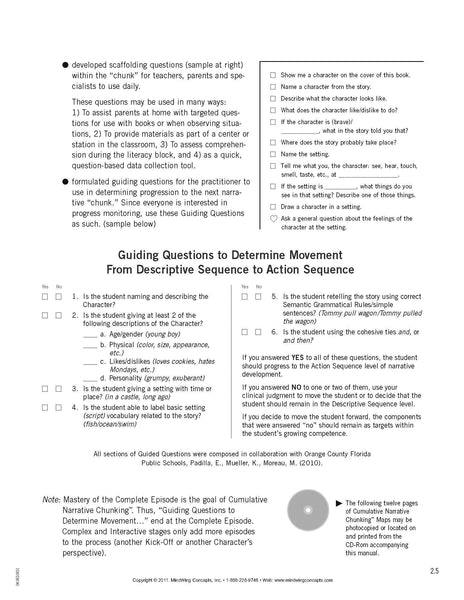Autism Spectrum Disorder
Children with Autism Spectrum Disorders demonstrate deficits in social interaction, verbal and nonverbal communication and repetitive behaviors or interests. In addition, they often have unusual responses to sensory experiences, such as certain sounds or the way objects look. Each of these symptoms can range from mild to severe and will present in each individual child differently. Children and adults with Autism display an individual combination of communication, social, and behavioral patterns that fit into an overall diagnosis of ASD (National Institutes of Health). The disorders listed under the term ASD are:
- Autism
- Asperger’s Syndrome and Pervasive Development Disorders
- Not Otherwise Specified (PDD-NOS)
Due to the increasing numbers of diagnoses, it is important that those in the teaching profession are aware of teaching strategies and alternative approaches to intervention with these individuals so that they can achieve their potential in the academic and social realms. MindWing Concepts' tools have been utilized and recommended for teaching this population of children and adolescents.
“Story-Based Intervention” was cited as one of eleven established treatments for Autism.
Findings and Conclusions Report 2009, National Standards Project, United States National Autism Center
Story-Based (or Narrative) Intervention is needed when students experience difficulties using language to think, communicate and learn. The “narrative” (story) is the human mode of thought. The Story Grammar Marker® provides a concrete representation of the narrative episode. Stories are an integral part of social communication; they are how we share our ideas, plans, dreams, memories, and beliefs in social interaction at school, home or work. Children can be assisted through the use of narrative development with MindWing’s Autism Collection and our Social Communication collection of tools to:
- tell their “story”
- take perspective
- develop Theory of Mind
- become critical thinkers
- build Central Coherence
- solve problems
- initiate conversation to establish relationships
- recognize feelings through verbal and nonverbal cues
- infer
- make plans
- improve writing with cohesion
Narrative intervention is important to all students, but especially those who may have social communication, developmental or learning challenges.
Rooted in MindWing’s methodology, MindWing’s Autism Collection focuses on areas such as:
- Using the stages of Narrative Development as they relate to both literature and social situations
- Making connections, perspective taking and inference using the Critical Thinking Triangle™
- Fostering Theory of Mind and Sentence Complementation (the language needed to communicate ToM)
- Supporting receptive and expressive conversational repair with Six-Second-Stories™ (McElhinney)
- Helping children to develop executive functions of organization, setting goals, making plans and carrying out the plan
- Facilitating problem solving & conflict resolution using MindWing‘s Social Problem Solving Model
- Aiding in building Central Coherence (Frith) using Cumulative Narrative Chunking™
- Helping children tune in to feelings and mental states
- Integrating use of Story Grammar Marker® with Social Thinking® (Winner) and Social Stories™ (Gray)
Spotlight On: Cumulative Narrative Chunking™
Cumulative Narrative Chunking™ facilitates the development of coherence and linguistic cohesion. The research-based narrative development sequence, initially presented in Chapter Four of It’s All About the Story!, is used as a basis for developing the Big Picture. In Facilitating Relationships!, the stages of narrative development are presented as “cumulative chunks” guiding our thinking and informing our instruction and intervention. Since the narrative is the social situation in life or storybook, the use of this cumulative structure assists us in deciding upon…
- a place to begin instruction or intervention
- a sequence of steps within the student’s Zone of Proximal Development (Vygotsky, L., 1978)
- a specific area of focus, within a “chunk” for targeted lessons
Just as the Stages of Narrative Development are useful for language/literacy assessment and intervention, Cumulative Narrative Chunking™ is powerful in the realm of social cognition, as we assist children to gradually understand, express and discuss elements of the “Big Picture.” Narrative language is also a vehicle to understand and express life’s events. These “narrative chunks” are designed to help students build up the situation or story in units rather than isolated details. As students progress, they build competency in narrative language and thought. Simultaneously, they build competency in both central coherence (Big Picture) and linguistic cohesion (Cohesive Ties). Through the use of Cumulative Narrative Chunking™, we attempt to provide a concise way to:
…learn narrative structure,
…note your students’ ability levels,
…inform your instruction,
…track and keep track of progress.
What are the Cumulative Narrative Chunks?
Each of these Cumulative Narrative Chunks is an entity in itself. Each “chunk” is based on a Stage of Narrative Development (described fully in It’s All About the Story, Story Grammar Marker® manual and Braidy the StoryBraid® manual). The 7 Stages are:
- Descriptive Sequence
- Action Sequence
- Reactive Sequence
- Abbreviated Episode
- Complete Episode
- Complex Episode
- Interactive Episode
Since the narrative chunks are cumulative they provide a model for building-up, as well as breaking down, a story or social situation. Practitioners and students become aware of this cumulative process as they collaborate to observe social situations and solve problems within them. They can be used to plan lessons and structure instruction or intervention with role play, picture books, videos, movies, TV shows, cartoons, chapter books, short stories or novels, as well as videos of real life experiences or the social situation itself in real time.
See sample pages below from Facilitating Relationships, Autism Book 3 for an example of the Descriptive Sequence Chunk.
Click here or on the pictures below for an enlarged version.




